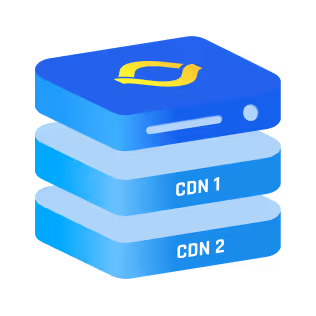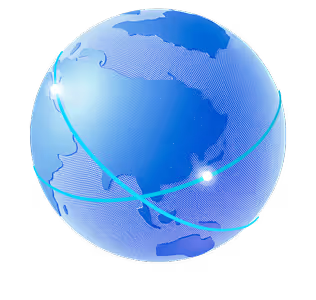Every time you visit a website, send a message, or stream a video, your device needs an address to send and receive data. Not a home address, not a username, but a real, numerical address that computers understand.
This address is what we call an IP address, and the original version that powered the early internet is called IPv4. Now here’s the problem. The internet grew faster than anyone expected, and IPv4 wasn’t built for the world we live in today.
What Is IPv4?
IPv4 stands for Internet Protocol version 4. It’s a system that assigns addresses to every device connected to a network. Think of it like a postal address for your computer or phone.
An IPv4 address looks something like this:
192.168.1.1
Each IPv4 address has four numbers, separated by dots. Each number can range from 0 to 255.
So, in total, there are about 4.3 billion unique IPv4 addresses. When it was invented in the 1980s, that seemed like more than enough. It wasn’t.
{{cool-component}}
How Does IPv4 Work?
When your device connects to the internet, your router or ISP gives it an IPv4 address. This is how websites know where to send data.
IPv4 is part of a bigger system called TCP/IP. It handles:
- Routing: figuring out where data should go
- Addressing: giving each device a unique label
- Packet delivery: making sure information is split into chunks and reassembled correctly
How Are IPv4 Addresses Calculated and Assigned?
IPv4 addresses are built using 32 bits, and those bits are split into four groups of 8 (called “octets”). Each group is then converted into a number between 0 and 255, which is why IPv4 addresses look like this:
192.0.2.45
That’s not just random. Behind the scenes, this is how it works:
- The binary version of 192 is 11000000
- The full IPv4 address is really a string of 32 binary digits
For example:
11000000.00000000.00000010.00101101
That’s just the binary form of 192.0.2.45.
Now, who decides who gets what? That’s handled by a global hierarchy:
- IANA (Internet Assigned Numbers Authority): IANA manages the global pool of IPv4 addresses.
- RIRs (Regional Internet Registries): IANA gives big blocks to regional registries like ARIN (North America), RIPE NCC (Europe), APNIC (Asia Pacific), etc.
- ISPs and Organizations: RIRs distribute blocks to internet providers, governments, and large companies. These, in turn, assign them to you.
If you’re at home, your router likely uses DHCP to automatically assign your device a local IP address like 192.168.1.5. Your ISP gives your router a public IP; the one the world sees.
There are also classes of IPv4 addresses, which were part of the old way to split the address space:
- Class A: 0.0.0.0 to 127.255.255.255 (very large networks)
- Class B: 128.0.0.0 to 191.255.255.255
- Class C: 192.0.0.0 to 223.255.255.255 (small networks)
This class system is now mostly replaced by CIDR (Classless Inter-Domain Routing), which lets networks be sized more flexibly, like 192.168.0.0/24 (a block of 256 addresses).
What Is the Limitation of the IPv4 Protocol?
IPv4’s biggest limitation is its address space. There are only so many addresses it can give out, and we’re basically out of them.
Here’s why:
- It only supports 32-bit addresses (that's where the 4.3 billion number comes from)
- A huge chunk of those are reserved for private use or special purposes
- Some are blocked or blacklisted due to abuse
So in reality, the number of usable IPv4 addresses is much smaller than it looks on paper.
What Factors Limit the Number of Available IPv4 Addresses?
It’s not just math. Several real-world factors make the problem worse:
- Reserved Ranges: Addresses like 192.168.x.x or 10.x.x.x are reserved for private networks. These can’t be used on the public internet.
- Wasted Allocation: In the early days, some organizations were given massive blocks of IP addresses they didn’t need.
- Geopolitical Distribution: Some regions have more IPs than others, causing shortages in places like Asia and Africa.
- IP Address Restrictions: Some services block entire address ranges due to spam or fraud, shrinking usable space.
Workarounds to Extend IPv4
Since we can’t magically make more IPv4 addresses, people came up with ways to stretch the supply.
- NAT (Network Address Translation)
This lets many devices share one public IP. Your home router does this already; you and everyone on your Wi-Fi share one address, even if you have 10 devices online. - DHCP
Dynamic allocation of IP addresses. When a device disconnects, its IP is recycled for someone else. - IPv4 Leasing
Some companies rent out unused IPv4 blocks. Yes, we’re at a point where IPs are being leased like real estate.
Even with all that, the system is strained.
IPv4 vs IPv6
To fix the problem, the internet needed a replacement. That’s where IPv6 comes in.
Let’s break down IPv4 vs IPv6:
IPv6 solves the address shortage, but adoption has been slow. Many devices and networks still rely on IPv4, so both systems exist side by side.
{{cool-component}}
Why Not Switch to IPv6 Completely?
Good question. But here’s why it’s complicated:
- Old devices don’t support IPv6
- Many websites still use IPv4
- ISPs and hosting companies need to maintain both systems
- Transitioning takes time and money
So while IPv6 is the future, IPv4 is still very much part of the present.
Can You Still Get an IPv4 Address?
Yes, but it’s harder now. Most people get one through their ISP or cloud provider. If you want a static IPv4 address (one that doesn’t change), you might have to pay extra or join a waiting list.
Some companies buy and sell IP blocks on the secondary market. These can cost upwards of $40 per IP.
How IP Address Restrictions Work
Because IPs are limited, they’re heavily managed. Sometimes you’ll hit restrictions without realizing it.
- Rate-limiting: Some services block repeated requests from the same IP
- Geo-blocking: Certain IPs are tied to countries and get blocked by region
- Blacklist databases: Spammers and bots get their IPs flagged and denied access to apps or websites
That’s why using a VPN often helps bypass these blocks as it gives you a fresh IP.
Should You Care About IPv4?
If you build websites, manage servers, or run any kind of app, yes, you should care. Even if you're just curious about how the internet works, IPv4 is a foundational concept.
Most likely, your device is already using an ipv4ip4v address right now. Run this in your browser:
what is my ip
Chances are, you’ll see a dotted format, and that’s IPv4.
How to Check Your IPv4 Address
Finding your IPv4 address is easy. Here's how:
On Windows:
- Open Command Prompt
- Type:
ipconfig - Look for IPv4 Address under your active network
On macOS or Linux:
- Open Terminal
- Type:
Ifconfig
or
ip a - Find the line that shows inet followed by something like 192.168.x.x
On your browser:
Just Google: what is my IP
You’ll see your public IPv4 address right at the top.
Remember, this is the address your device uses to talk to the outside world. If you're on a shared network, this is likely assigned by your router through NAT.
Conclusion
IPv4 was never meant to handle billions of people with dozens of devices each. But thanks to smart workarounds like NAT and the gradual rise of IPv6, it’s still powering much of the internet today.



.png)
.png)
.png)






